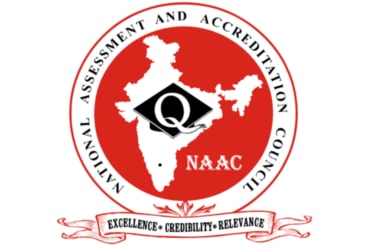
In its efforts to remain relevant and globally acceptable, NAAC has taken cognizance of the changing trends in higher education, stakeholder perceptions and feedback.
This is besides the avalanche of experience gained from its accreditation exercise involving more than 11,132 institutions [518 Universities and 10614 Colleges] till July 2017, which stand in good stead in all its endeavours.
Over the last few months, NAAC has conducted several rounds of stakeholder interactions, a National Workshop and Meetings of several Working Groups for the preparation of the Manuals for Universities, Autonomous Colleges and Affiliated Colleges.
The draft framework was pilot tested on select Higher Education Institutions (HEI’s) across the country.
A National Consultation on the Revised Accreditation Framework was held on 25th April, 2017 at New Delhi. Shri Prakash Javadekar, Minister for Human Resource Development, Government of India, inaugurated the programme in which eminent academicians and educationists actively participated.
The Revised Accreditation Framework which became operational in July 2017, is ICT enabled, objective, transparent, scalable and robust.
The new framework is a subtle combination of System Generated Scores (SGS) with a combination of online evaluation (70%) and Peer evaluation (30%).
This would usher in high level of transparency.
The Revised Framework is more ICT intensive and ‘outcome based’.
The current grading pattern of NAAC (A++, A+, A, B++, B+, B, C, D) would be continued for accreditation.
A system of applying minimum qualifiers for achieving a grade has been designed and will be implemented.
For example, Universities should score a minimum of 3.01 in Criteria 1, 2 and 3 for achieving a “A” “A+” “A++”grade.
NAAC: Know More- National Assessment and Accreditation Council, an autonomous body, has been established by the University Grants Commission in 1994.
- This is in pursuance of the recommendations made by the National Policy of Education, 1986 and the Programme of Action (POA), 1992 which lay special emphasis on evaluating the quality of higher education in India.
- The prime mandate of NAAC, as envisaged in its Memorandum of Association (MoA), is to assess and accredit institutions of higher learning, universities and colleges or one or more of their units, i.e., departments, schools, institutions, programmes, etc.
- The NAAC functions through its General Council and Executive Committee where educational administrators, policy makers and senior academicians from a cross-section of system of higher education are represented.
- Under the new methodology introduced by NAAC w.e.f. 1st April, 2007, the higher education institutions are assessed and accredited by a two-step approach. In the first step, the institution is required to seek ‘Institutional Eligibility for Quality Assessment (IEQA)’ and the second step is the assessment and accreditation of the institute under the grades ‘A’, ‘B’, ‘C’ for accredited institutions; and ‘D’ for those which are not accredited. NAAC has identified seven criteria.